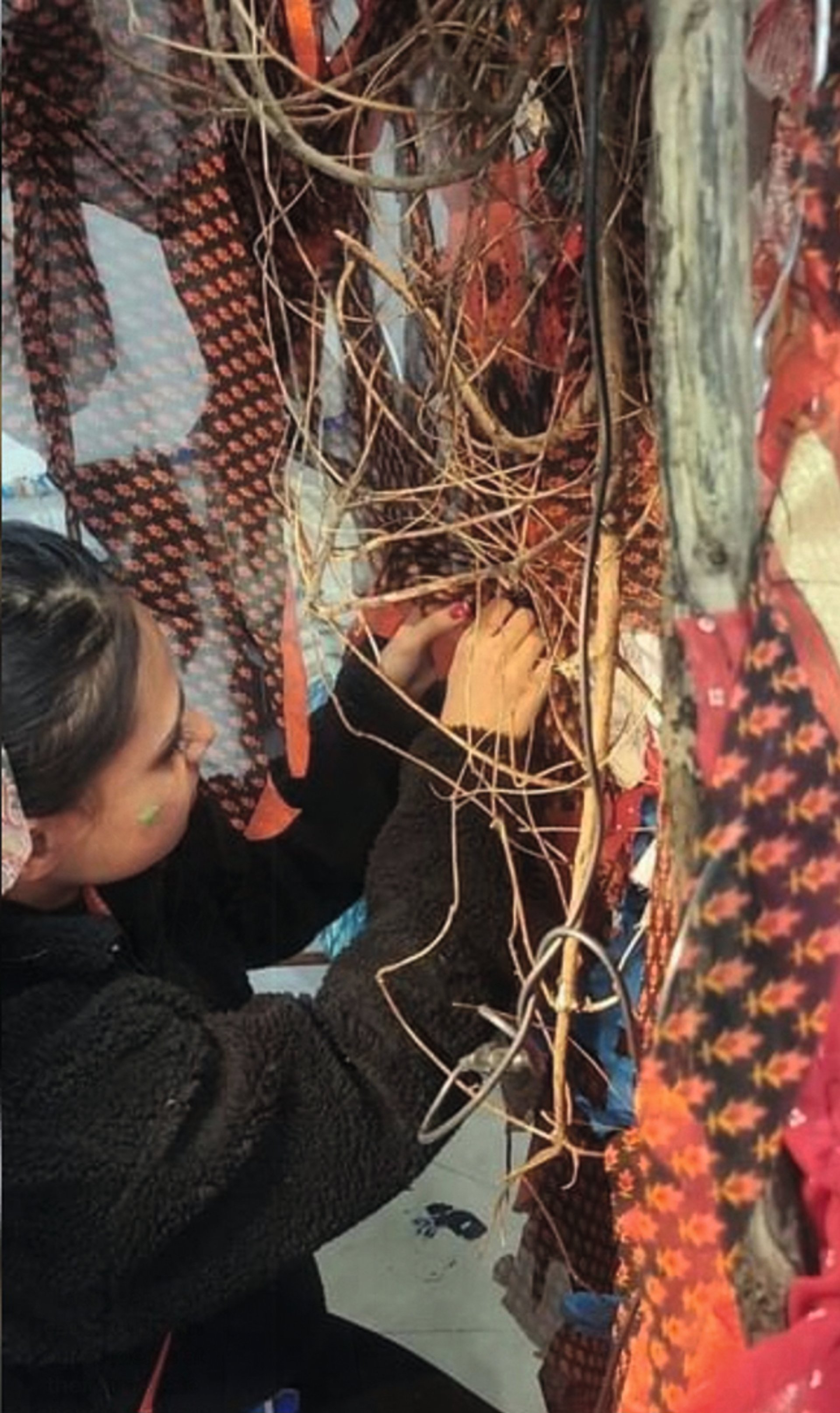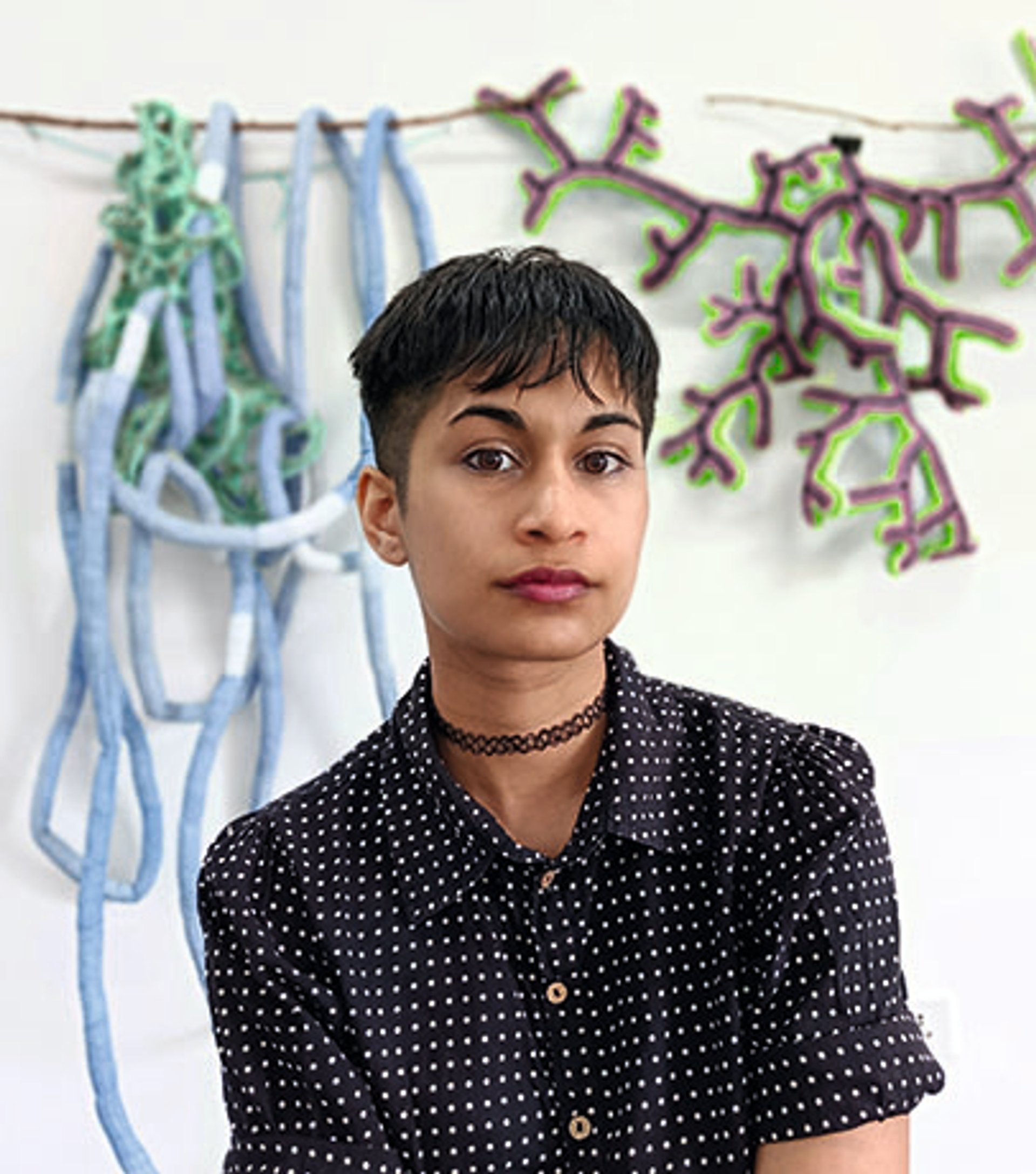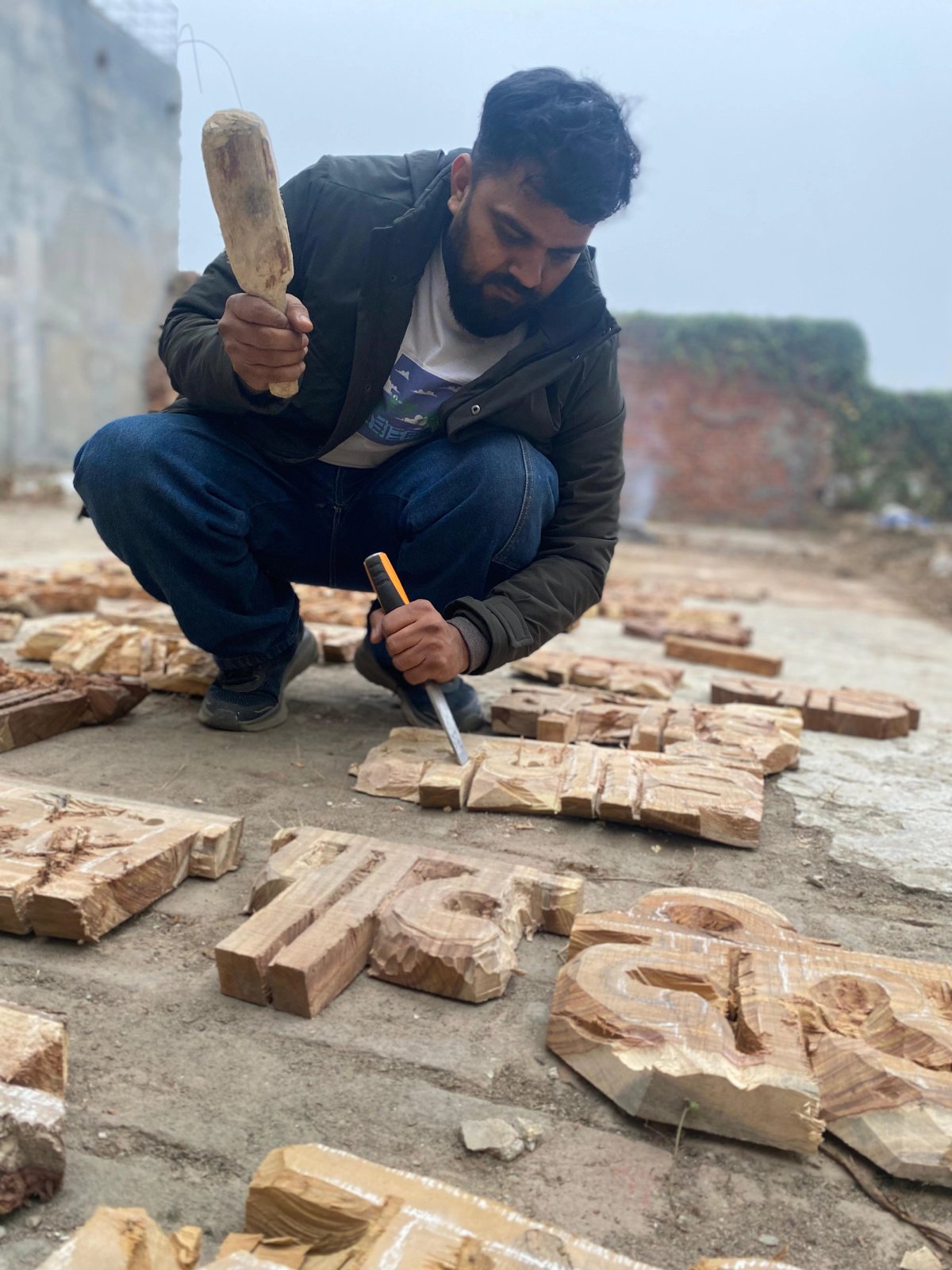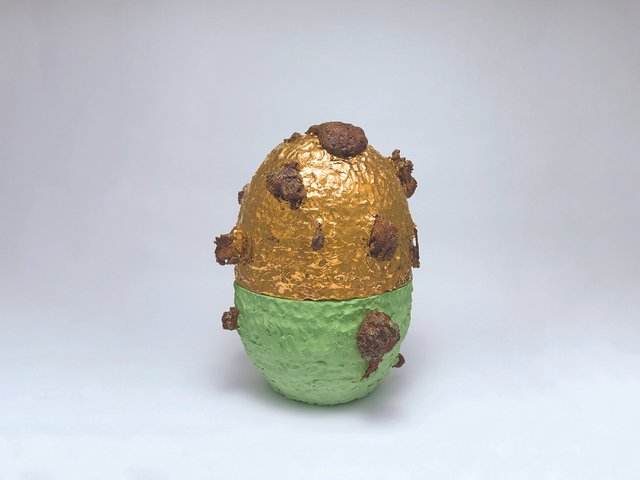The sight of a rugged, upended fabric forest will interrupt visitors to this year’s IAF. Swathes of hand-stitched material swatches, incorporating clothing and upholstery samples, along with painted panels will be suspended from a structure to form the installation of Imon Chetia Phukan, who is one of IAF’s three artists-in-residence this year.
For Phukan the work is both a nod to her homeland in Assam and an expression of her visceral connection to nature. The natural environment has been a support system for her: a balm at times of personal loss and a sanctuary during her frequent relocations across India and abroad. Bringing this new commission to the fair as part of the artists-in-residence programme, in partnership with the Royal College of Art in London, will, the artist hopes, provide space to “explore the fractured relations between self and the society we are living in, and accept exiled emotions”.

Imon Chetia Phukan works on her suspended fabric forest, a nod to her homeland in Assam Courtesy the artist
IAF has an especially intense dynamic: typically seething with visitors, from students to seasoned collectors and school visits, it functions as much as a marketplace as an educational institution. For many, this is one of very few opportunities in India to experience a range of creative outputs, particularly those from South Asia. Residents in the past have held workshops and this year, with support from the well-being brand SoulTree, there are three new artists’ commissions. For the selected artists this is an invitation to realise their most ambitious public works yet.
“The opportunity to scale up my work—both in size and concept—is incredibly significant for me,” says liactuallee. The Mumbai-based artist, who recently installed a work in the mountains of Ladakh, has created Transmutations, an enveloping web-like canopy. Made in collaboration with Women’s Strength, an organisation in Kerala’s Nilgiri Hills region which provides skill-building courses, the creation appears both aquatic and extraterrestrial. Its body is made with plastic yarn, composed from discarded biscuit and candy wrappers, and encased with crocheted neon green nylon. The choice of waste materials, they hope, will “ignite curiosity and challenge visitors to reconsider their relationship with the world around them”. The experience of dwelling in the quasi-shelter “is meant to create a sense of wonder”, they add. Apertures in the covering allow light to flood in which, given its outdoor location, will create a floor-based pattern of shadows.

Artist liactuallee has created a web-like canopy from waste materials Courtesy of the artist
Umesh S. is similarly engaged with themes of abandonment and retrieval. Recognising the plight of India’s agrarian communities, who face persistent threats to their livelihoods and a daily fight for recognition, Umesh has been preserving the wisdom and culture of his ancestral village in Bihar. His sculptural installation is a composition of poetic verses carved onto panels of waste wood and implements cast aside by those no longer able to farm. The words, written in Bhojpuri, a language spoken in parts of northern India, are, Umesh says, “the words that once echoed through fields and hearts, carrying the essence of a way of life deeply intertwined with nature.”
The prominence of the natural world across these commissions is perhaps unsurprising. The work, as well as anyone visiting Delhi, cannot avoid exposure to the capital’s chronic air pollution. In mid-January the city had a worse air quality rating than wildfire-stricken Los Angeles. While this phenomenon is often blamed on farmer’s burning stubble, Delhi’s problem is a combination of these methods along with the city’s topography as well as vehicle emissions, industrial pollutants and construction dust. As Indian states all over experience rapid urban growth, lower air quality and the chasm between city and rural environments is becoming more ubiquitous. The potency of these artists’ projects will hopefully both encourage reflection on these existential issues while giving propulsion to their nascent careers.




